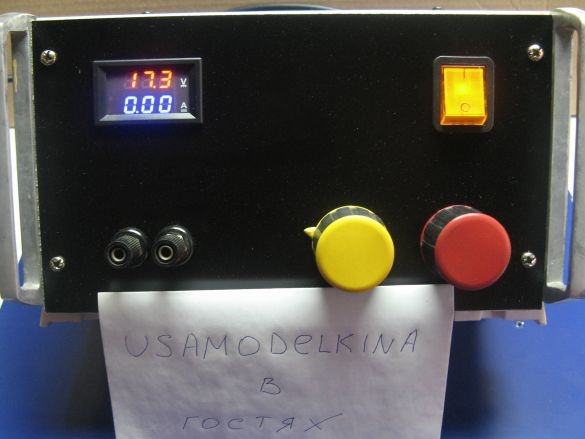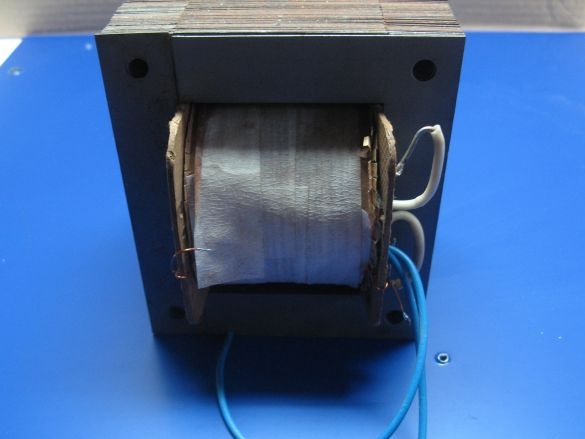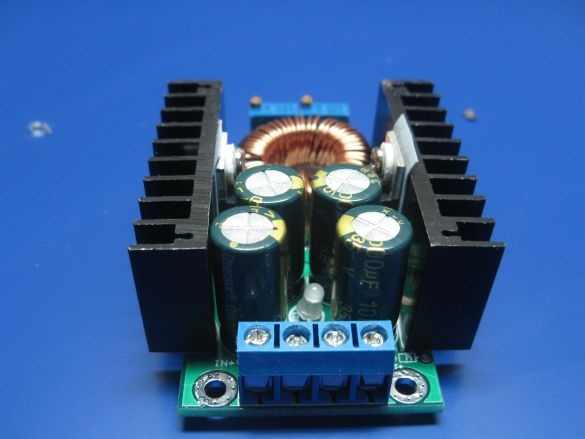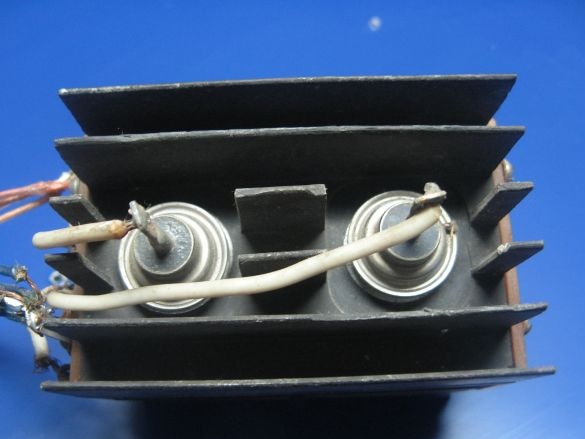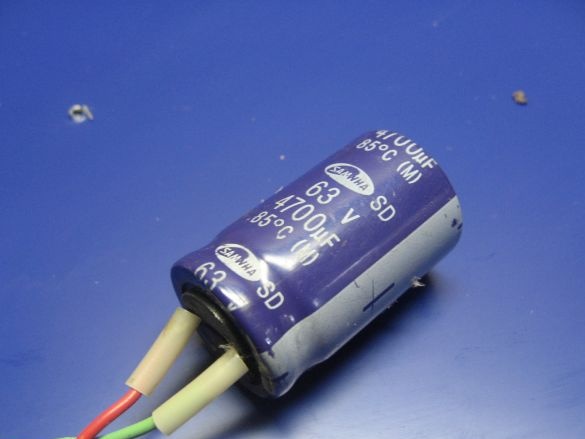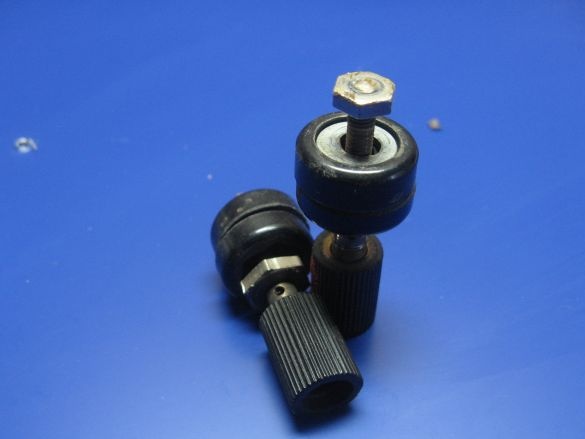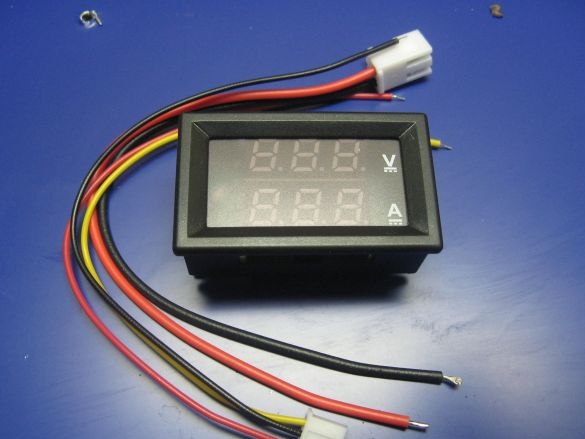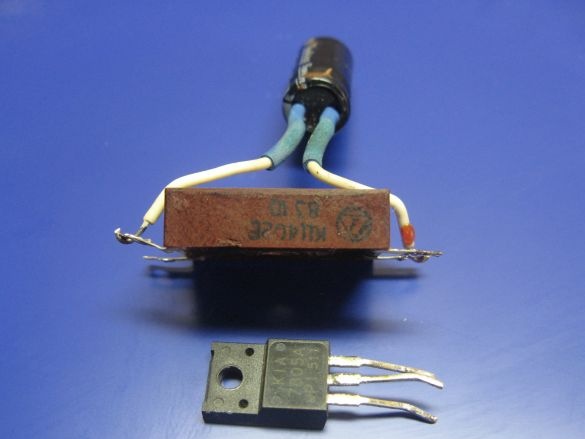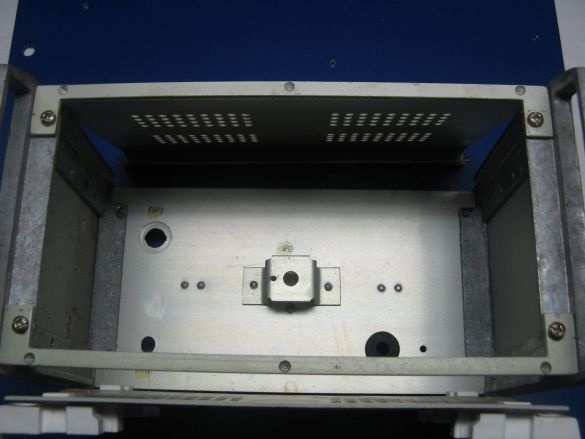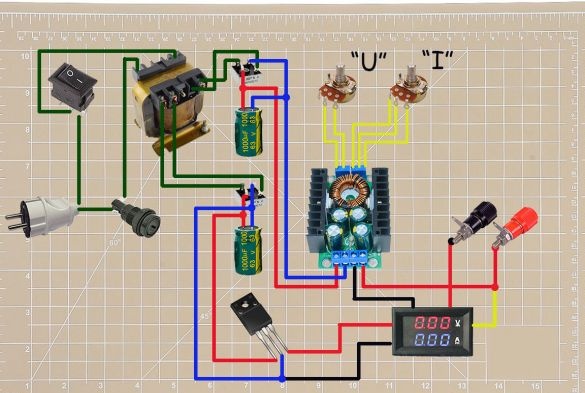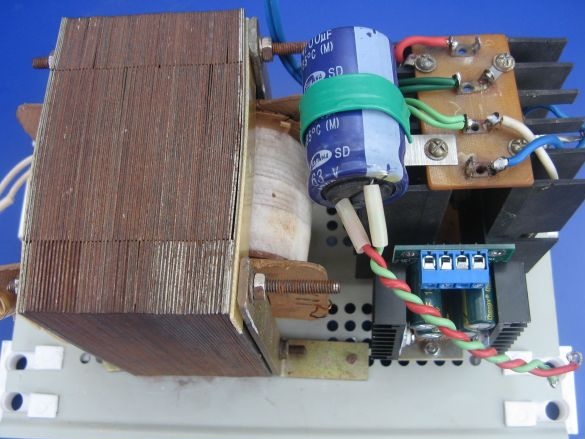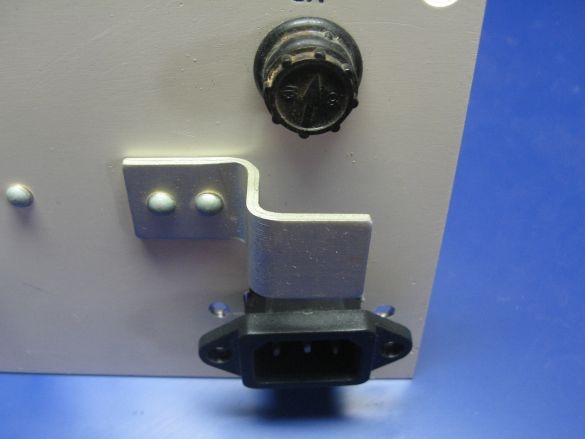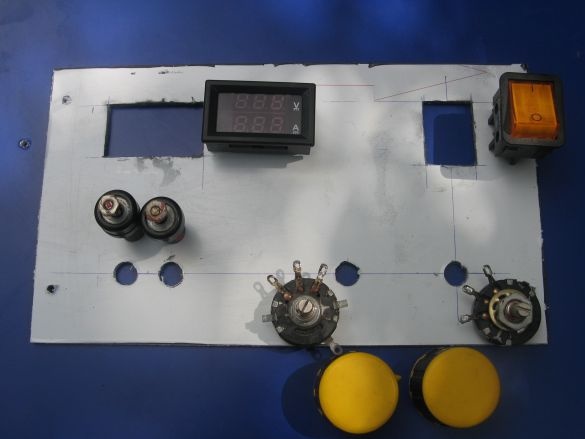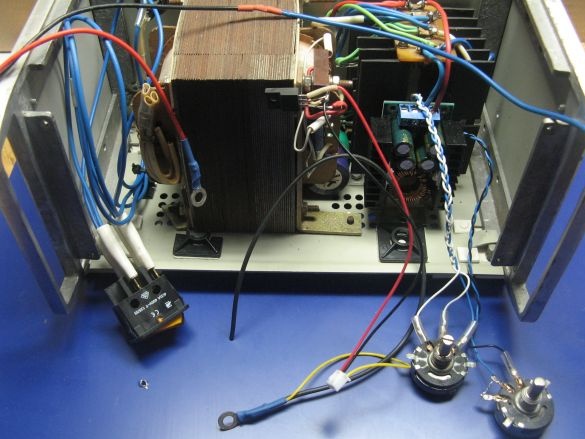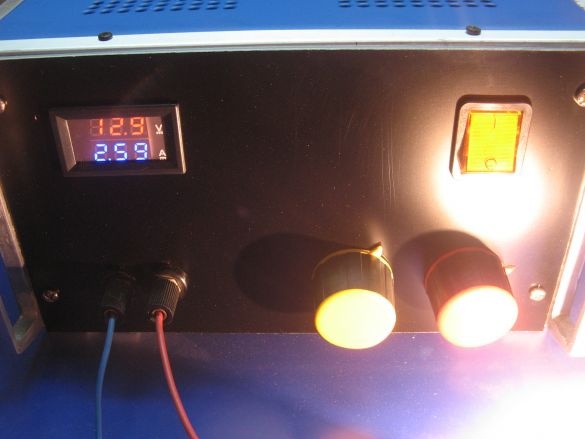Not so long ago, I collected mini adjustable power supply. In principle, it suits me. Suitable for all low power homemade. Sometimes it is necessary to control the current consumption of the device, especially in the repair. Also, current adjustment is necessary when working with batteries. I decided to assemble such a laboratory power supply. Rummaging through the bins, I found the necessary components.
For LBP we will need:
- transformer;
- DC-DC converter;
- two diode bridges;
- two electrolytic capacitors;
- output terminals;
- Volt-Ammeter;
- 5V linear stabilizer;
- housing;
- a piece of sheet plastic;
- instruments.
About accessories.
A step-down transformer of an honorable age lies a very long time ago. A transformer with a 27 V winding, has a tap in the region of 22 V. Also, a separate winding for 7-8 V was rewound, to power the Volt-Amp meter.
I applied a DC-DC converter from China.
The converter is powered by a voltage of up to 40 V, and at the same time it provides an output of 35 V. The current is declared 9 A, apparently limiting and with good cooling.
By the way, I do not recommend applying more than 30 V to the converter. It has a low-power stabilizer at 5 V, the maximum input voltage of which is 30 V, against the declared 40 V. It will not work for long. You can certainly refine the circuit to a higher voltage, but not about that.
I have a diode bridge from individual diodes. Remained from the old project. D242 diodes are installed. You can apply the assembly, but as I have it, I’ll apply it.
Filter capacitor at 63 V and a capacity of 4700 uF. The converter also has its own two at 470 microfarads. Selected based on 1 Ampere - 1 uF. I plan to load the power supply up to 5 A.
The output terminals need reliable. Found old in the bins, the current of 5 A withstand with a bang.
Volt-Ammeter from China. It has three segments, not very convenient, but it will suit me. Comes complete with wires. The maximum measured voltage is 100 V, the current is 10 A. The supply voltage is 30 V at maximum. Here, like the converter, the same power stabilizer.
I will power the Volt-Ammeter through a diode bridge with a capacitor and a 5 V linear regulator.
The case is from an old regulator of a soldering iron, something like a Soviet soldering station. Solid body, completely made of aluminum. I will remove the bracket on the rear panel.
The front panel will be made of composite plastic. I scored it from advertisers. It consists of PVC plastic sandwiched between sheets of aluminum.
About the scheme.
The circuit has two shoulders.
The upper shoulder is power. Consists of: a diode bridge, a smoothing capacitor, a DC-DC converter. Power, negative wire goes through the ammeter.
Lower arm feeding a volt-ampere meter. It has a diode bridge with a capacitor and a linear stabilizer. If you do not set it, the readings will “float”.
Assembly.
After preliminary marking and drilling holes, I install power elements. I will take the voltage and current adjustment resistors beyond the converter board. Also connected together the power winding of the transformer, the diode bridge and the converter. A capacitor was fixed between the transformer and the diode bridge. Between the right sidewall left a gap. If it gets very hot, I will install a fan.
On the rear panel of the case will be installed a network connector and a fuse. Initially, I did not plan to install the connector; I wanted to make the power cord not removable. But still I decided to install, the benefit of connectors and power cords is enough.
Mark the front panel for the controls. A protective film is glued on the composite plastic, it is convenient to mark it out usually with a ballpoint pen. I cut holes and windows.
I solder the wires to the resistors. I connect the wires of the Volt-Amp meter and install its power, consisting of three parts. I fasten directly to the transformer stud. Nothing will heat up in this circuit.
It remains to remove the protective film and install everything on the front panel. I also found another resistor handle, or rather a different color. Just the color display numbers Volt (red). The voltage is not regulated evenly, I ordered a multi-turn resistor in China. Therefore, I have not yet applied the marking of the controls. The power supply perfectly stabilizes the current. There is a paint mark on the positive terminal, not shown on the photo.
The Laboratory Power Supply is assembled and works as expected. Instead of a transformer, a pulse source can be used. I had a transformer and a housing for it, and I applied them.
Assembly video:


